The violence on Michigan State’s campus on Feb. 13 prompted many in the Lansing community to support Michigan State students. “Spartan Strong” posters, signs in store windows, and thousands upon thousands of flowers brightened the usually dreary mid-February campus. The university’s more than 50,000 students realized that there are hundreds of thousands more who care deeply for them, and wanted to express that in even the smallest of ways.
In the Communication Arts and Sciences building on campus, splashes of color in children’s artwork brightened the halls. The posters were the idea of Julie Fusi, an executive assistant in the building. Fusi grew up in DeWitt Public Schools and taught in two Lansing-area schools after graduating from Michigan State. Fusi was born, raised and started her family in the area. She calls Michigan State University and its surrounding community “an extended family.”

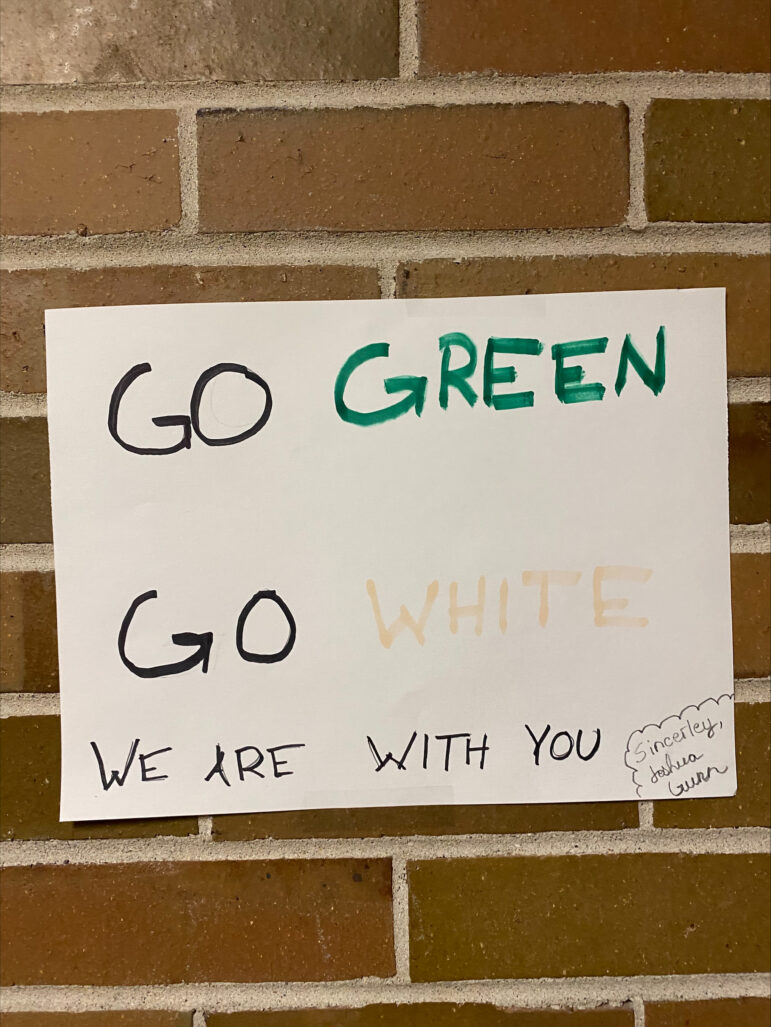









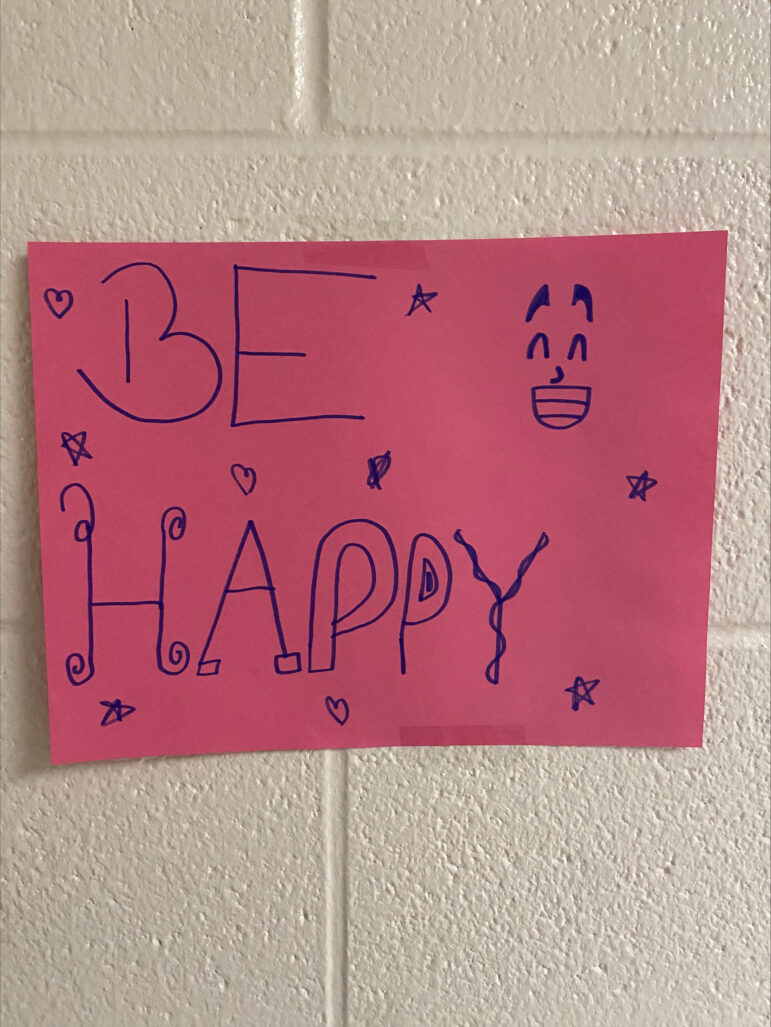



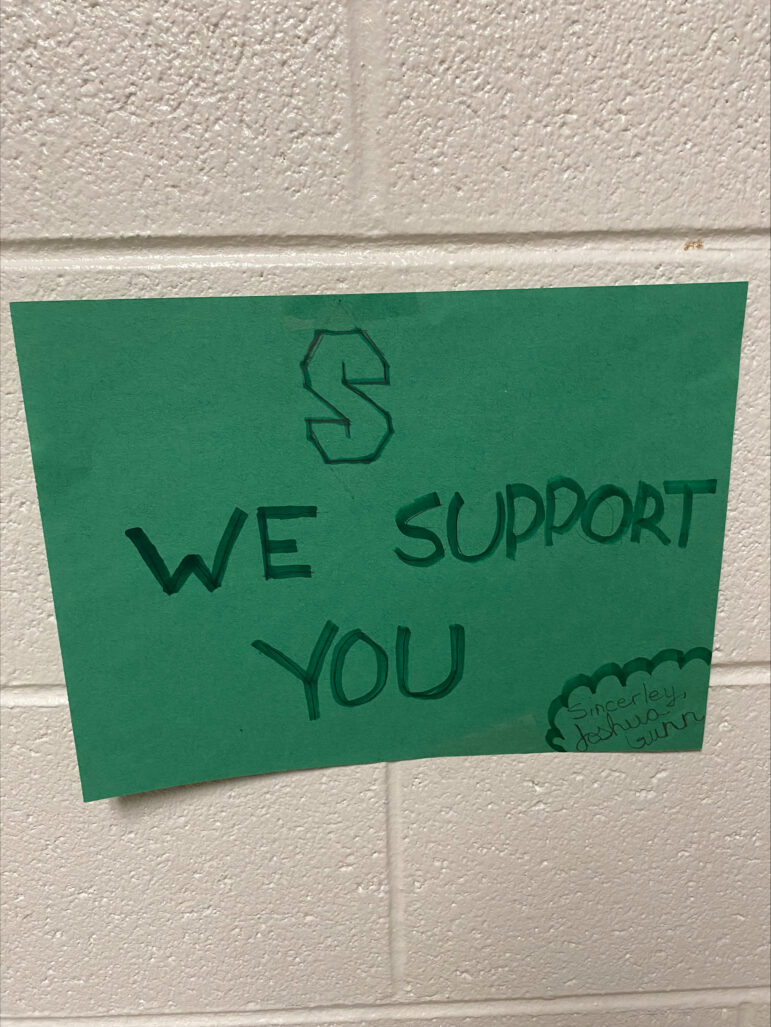
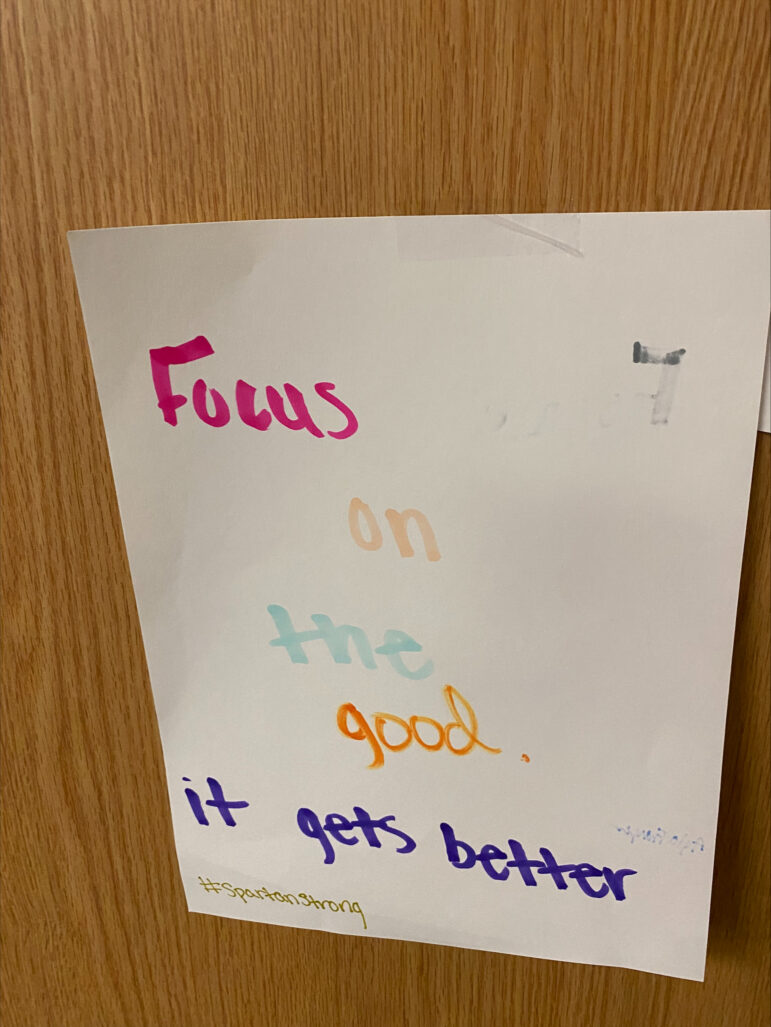
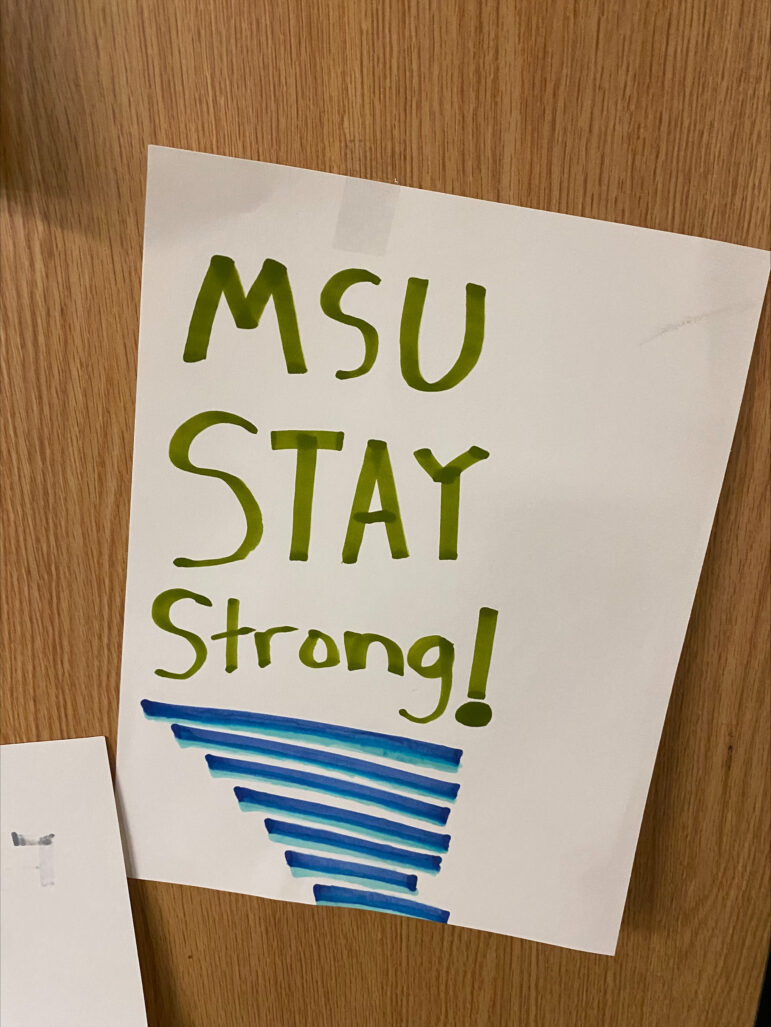



Angry that someone had hurt her community, Fusi redirected her feelings into something positive. “My mind went immediately to, ‘How can I help?’” Fusi said. “This is my home. These are my people. I just wanted to help in any way that I could.”
Julie’s 6-year-old daughter’s artwork adorns the walls and bulletin boards in her office, which inspired the mother of three to reach out to a friend, Whitney Fiebiger, a teacher at DeWitt Middle School, and Hannah Fogel, her daughter’s kindergarten teacher at Schavey Road Elementary School.
In the following days, Fiebiger and Fogel’s classes created an art gallery to grace the brick interior of one of the busiest buildings on Michigan State’s campus. Fiebiger brought the project to the attention of other teachers and classes at DeWitt Middle School, prompting students from across the school to contribute. Fusi compiled the students’ artwork and hung them around the CAS building with help from her two oldest children, ages 6 and 4, before MSU classes resumed on Feb. 20.
Fiebiger told Fusi how hard it had been to come to school the next day and talk with her middle school students about the events. One middle school student described it as a “reality check.” “With it being in our backyard, they were pretty shaken up,” said Fiebiger.
But Fiebiger noticed a change in her students after she offered them a way to help. Students said it felt good to think they might be making a difference. “I think it was a good time for them to reflect,” said Fiebiger. “Let’s take a pause, take a minute. Try to make somebody smile.”
Acts of kindness like this are a main focus for Fogel’s kindergarten class. Fogel teaches her students to be, “bucket-fillers,” spreading love to people even if they don’t know them or why they may need support.
“They were really excited to help but didn’t really understand why they were doing it,” said Fogel. “So that started a conversation about how we don’t always know who we’re doing kind things for personally, but we always need to be kind to others. Whether we know them or don’t know them, whether we see them or not.”